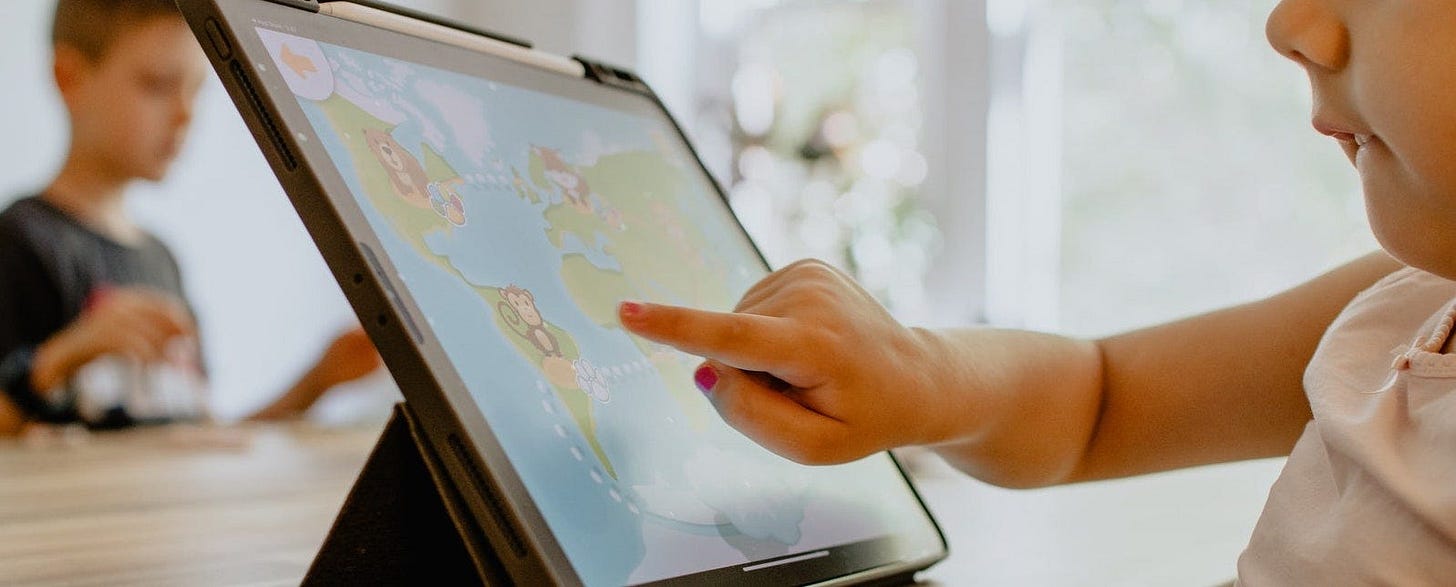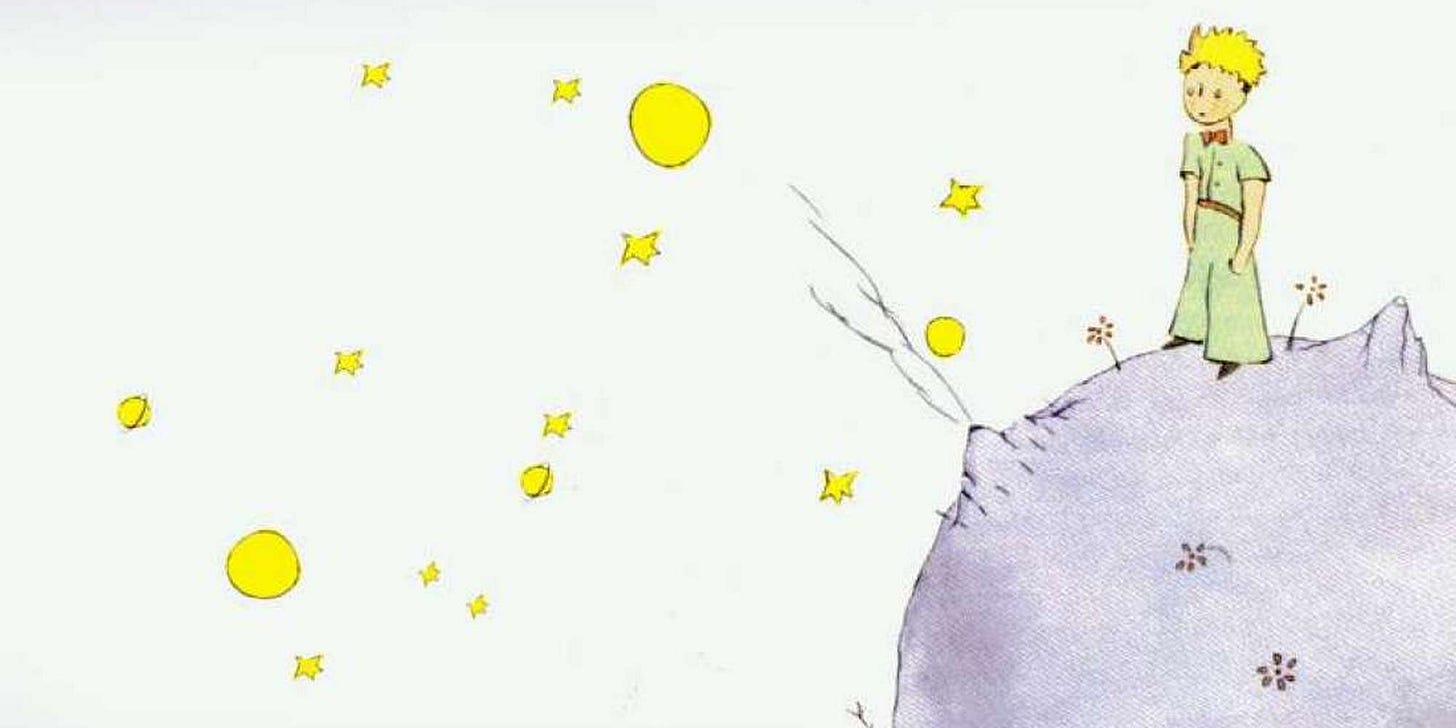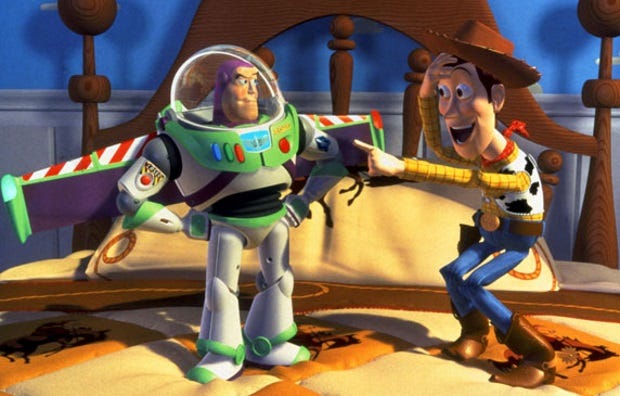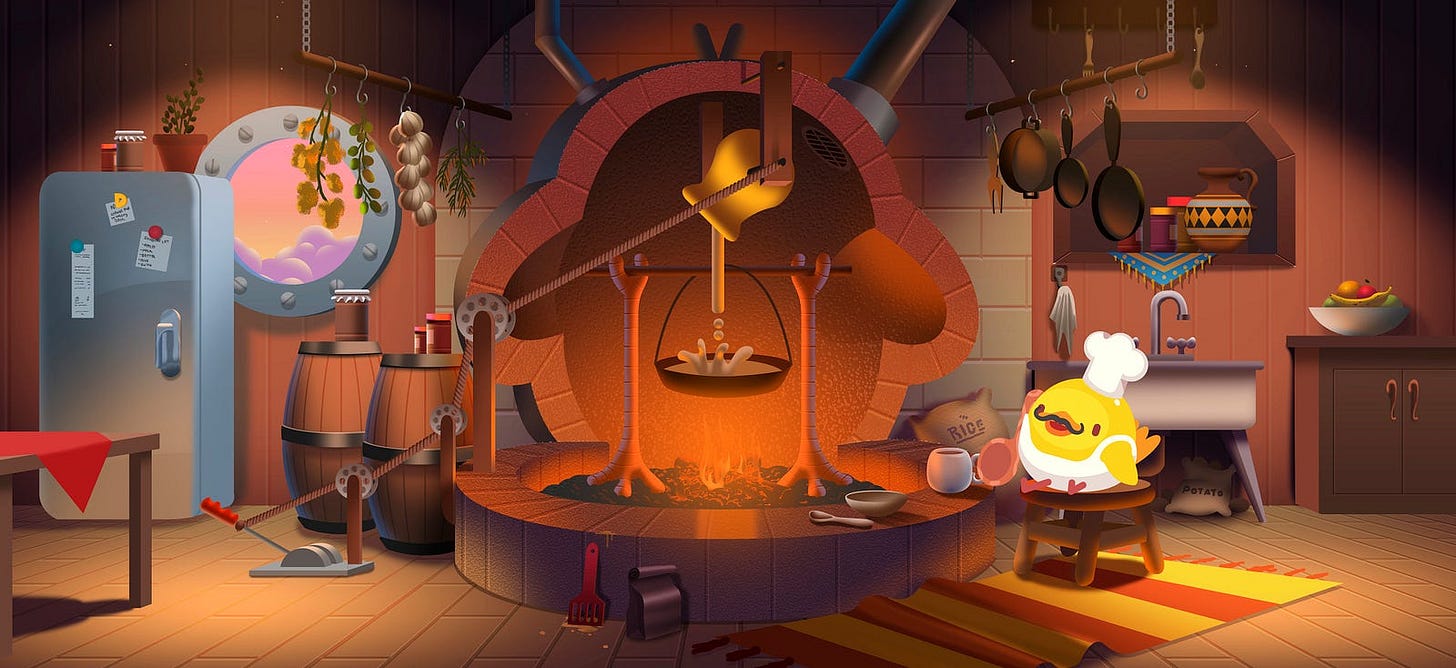A gigantic thanks to everyone who read Media Tribes last month, I was humbled by the number of people who signed up.
Today I’m diving into a subject I’m particularly fond of—apps for preschoolers and the problems (and solutions) this wonderful space faces. Drawing from the thinking of Björn Jeffery, Mimi Ito, and my own experience co-designing/directing an app of my own, I have a lot of strong opinions about its future.
If you like this piece, consider subscribing! Thanks for reading.
“Where is the Pixar of apps?” wrote Björn Jeffery on his blog in 2019.
The cofounder and former CEO of Toca Boca was talking about interactive touchscreen media for preschoolers, an industry that straddles a line between gaming, education, and entertainment.
“Where are the studios that have that amount of care and attention to detail? The app studios that love their craft like Pixar loves movies? I understand the financial reality of this space… But ambition is free. And I rarely see an experiment with a sense of curiosity and adventurousness.”
He’s right. Innovation in kids’ apps is rarer than you might think.
Fifteen years ago, this market was the wild west.
Early app developers came from different backgrounds — picture books, animation, advertising, online publishing — and influential titles like Nighty Night and Toca Hair Salon were created as experiments.
Now the industry has coalesced around the sensibilities and practices of a few market leaders. App “genres” have hardened into formulas used by studios across the globe. “One of the reasons it is hard to find great apps is that so many of them are going for the exact same concept,” wrote Jeffery. “Everything looks and feels the same, and it creates the impression of a non-differentiated market.”
So why are so many developers imitating each other?
A GAME OF NUMBERS
For starters, most apps have a very short lifespan. Only during a narrow window of time is a well-designed product likely to catch fire, be lifted by curators or by a snowballing success algorithm, and rescued from Apple’s and Google’s uncurated wastelands.
Salvation depends on a combination of strategy and luck, and publishers hedge their bets by placing many at once.
Most air is sucked up by global media companies with very little reason to innovate in the first place. For them kids’ apps are a means to an end; content marketing for already-popular franchises. Whereas animation and console games may be overseen with more scrutiny, app production is more quickly parsed and outsourced to studios in developing countries where titles are cranked out at breakneck speed with templates and algorithmically-driven tools of creation.
Boutique studios and sole creators, on the other hand, must compete with this onslaught. Most don’t have the edge of pre-existing IP so they’re playing a very different game from the get-go. For them, success means scoring enough points against the big guys to pay the bills.
And because smash hits are rare in this business, creators of all sizes are incentivized to spread their risk across many titles instead of incubating one single project to near-perfection. This makes for a game of quantity over quality, from international brands to indie creators. Survival is a matter of quickly developing reliable frameworks of repeatable success, which must come at the expense of experimentation and exploration.
There is very little margin for anyone in this business, and this is why very few kids’ apps feel alive the way a great cartoon or children’s book does. It’s very difficult to take artistic risks when you’re busy treading water.
MUSICAL CHAIRS
Next, there’s the subject of ASO, or App Store Optimization.
This market is built entirely on Apple’s and Google’s proprietary stores, and success depends on adherence to the rules of both companies. For years apps have lived or died by category rankings, the “top” lists you see on the first and second pages.
Because parents aren’t expected to spend much time browsing or researching apps for their kids — and why would they when so few kids’ apps are visually arresting, or exciting to adult ears and eyes? — they are most likely to download only what they see on their App Store homepage, or pick from the very tip of their own search results.
This all-powerful fact of consumer behavior has a perverse effect on the creation of kids’ apps that trickles upward into every part of the creative process. Ranking is so crucial that apps are reverse-engineered and designed, from the ground up, with ASO in mind. Creators hang their concepts, gameplay mechanics, stories, and characters around keywords parents are already punching into their keypads.
And if that doesn’t sound like building a pyramid upside-down, consider if other art forms adopted similar methods.
Forget Green Eggs and Ham, Stellaluna, The Little Prince, and Where the Wild Things Are, those would all be non-starters by the doctrine of ASO. Janell Cannon and Antoine de Saint-Exupéry would be told by their publishers to instead think along the lines of Firetruck ABCs, or Puppy-Dogs-Sing-Along-Learn-and-Dance-Parties.
Worse, App Store rules are always changing and studios must roll with the punches.
They must routinely update catalogues of content as new operating systems go live. It’s a cyclical, never-ending process that grows in proportion to one’s library.
Apps of unique construction ( those that contain code not shared by other apps ) are a liability because the labor of bug-fixing can’t be “batched” with dozens of other products grown from the same template. Studios are further incentivized to play it safe wherever possible, color within the lines, and allow their back catalogue to share as many interchangeable parts as possible.
ABCs and 123s
Finally, there’s the dubious label of “education” which is haphazardly slapped on apps with the hope of riding search results in multiple categories. This silliness exists thanks to outdated quirks in Apple’s and Google’s categories; there is no meaningful distinction between kids’ apps and educational apps. As a result, lines are blurred to the disadvantage of studio, parent, and child alike.
Let’s take this apart one piece at a time…
First, studios.
As I mentioned, it’s mission-critical for studios to have their apps rank high in search results. But when app stores draw no serious line between entertainment and education, then racecar games must compete with ABC lessons because they share the same leaderboard.
That’s why you see so many kids’ apps twisting themselves into pretzels to look “educational,” shoehorning pre-k curricular content into otherwise charming digital experiences for toddlers. Teachers and child development experts are paid as consultants to lend their names and stamps of approval. Creative teams must serve multiple masters at once.
Not only must they start from a simple, ASO-friendly concept, develop eye-catching visuals, delightfully intuitive controls, streamlined and maintainable code, cute characters, animations, jokes, music, and capture an elusive quality called replay value; they must also teach something.
What should an app teach, you ask? How about the alphabet, or the names of animals, states, or basic arithmetic?
Any lessons of rote memorization the child will soon encounter at school anyway will do. Simple facts lifted from an educational coloring book, or from a kindergarten class curriculum. It’s very difficult for any studio or creator to make something exciting and fun while juggling so many priorities.
Second, parents.
Now that we’ve established the economic impetus for Trojan-horsing ABCs lessons into kids’ apps where they don’t belong, it’s easy to see why parents get the short end of the stick.
Parents carry a lot of guilt about the amount of time their children spend looking at screens. While experts debate whether this guilt is well-founded or hyperbole, they almost all agree on one point: it’s not screen-time itself that we should focus on, but the quality of content on those screens.
This is where it gets sticky. Consumer research has found that most parents don’t treat apps like they would other forms of media like books, movies, or even video games.
Apps are tools to be deployed on children — they are distractions for long car rides, waiting at the airport, or dining out. As long as parents consider apps a last resort tool, they will be more interested in their utility than their cultural value.
This motivates studios and publishers to make hollow promises about an app’s educational utility, use a parent’s guilt to their advantage, and — as Mimi Ito describes the larger problem with edutainment in her incredible book about the history of children’s software — stoke fears of classism by implicitly selling the idea that educational apps can give a child “the edge” over others.
It would be one thing if edutainment apps delivered on this promise, but the jury is very much out. And it doesn’t take much imagination to see how bogus most offerings are. Just open your App Store, search “learning apps for kids” and scroll down for a bit. Soon you’ll see what I’m talking about: nowhere is the gulf between educational and curricular more pronounced than in a second-rate kids’ app.
These joyless touchscreen lessons are enough to make any kid hate the concept of learning before they ever set foot in a classroom.
Third, children.
At the bottom of this hierarchy, kids lose the most.
Think back to the most exciting and formative experiences you had with media as a young child. I think about going to see The Lion King, Toy Story, watching Wallace and Gromit with my mom at home, or playing Spyro the Dragon for the first time with my sister. Now imagine if Disney, Pixar, and Aardman Animations felt obligated to stuff math problems into their masterpieces.
Imagine if in Toy Story, Woody and Buzz’s poignant character arcs were formed around a teachable lesson about sharing which could be traced back to a four-page report commissioned by an expert on child development.
Imagine if Disney’s classic films — Snow White, Bambi, The Jungle Book, The Little Mermaid — were interrupted by songs about the alphabet, created for the purpose of reassuring parents that cartoons can be “good” for their kids.
Education, child psychology, and market research are all crucially important, but I believe a lot of studios have put the cart before the horse. Storytellers are needed to breathe new life into this medium.
So where are they? Where are the Walt Disneys, the Pete Docters, the Maurice Sendaks of kids’ apps? Where are the mavericks?
Why aren’t more creators experimenting, pushing boundaries, and taking artistic risks?
A CALL FOR MORE EXPERIMENTS
Dave Martell and I started CUDO with no funding, no connections to the games industry, and no experience in kids’ media. But we had a conviction that touchscreen media for children should be as awesome as the stuff we loved as kids.

Dave created an iOS sticker pack called Duncan the Silly Duck which was one of iMessage’s most downloaded stickers upon its release. People around the world loved the look of Duncan. So we got to work expanding Duncan’s world as an interactive storybook.
But what started as a side project grew and grew—as our characters, stories, and ideas for adventures took shape—we pivoted to slowly build something bigger: the basis for an animated series and line of toys.
This app has been on the back burner for several years. Now we’re circling back to release it. Even though it’s a few years old, it’s our first wholehearted attempt to work within a familiar formula while planting the seeds for something new.
Nothing you’ll find in Wake Up, Duncan! was copied/pasted from a kindergartner’s workbook. Nothing was born from market research. Nothing was suggested by a consulting schoolteacher or psychologist.
We didn’t pay anyone to bless this project as “educational” so we can rank against ABCs lessons. But we did pay for an original orchestral score.
In short, we wanted this app to feel like the media we loved as children while existing as an example of this art form we love. And I couldn’t be prouder of our small team.
WHY APPS ARE STILL IMPORTANT
It’s easy to overlook apps these days. But they are a magical, intermediate step for many children in their journey of growing; between picture books and Roblox are interactive touchscreen experiences they will remember forever.
Few app designers appreciate the gravity and duty of this.
A few years ago, Björn Jeffery pointed out the party will start only when parents take apps as seriously as they do movies, television, or books. In order for that to happen, more people need to make exciting work that appeals to parents and children alike.
So if you’re an artist or illustrator, consider making a kids’ app.
If you’re a game developer, consider making a kids’ app.
If you’re a forward-thinking entrepreneur looking for blue waters, hire the best artists, storytellers, and programmers you can find and make kids’ apps.
There’s a well-known phenomenon in the history of art that suggests a form’s best days are toward the end of its cultural relevance. You can see this even with gaming consoles; many systems see their most beloved titles released only after a successor console has hit the market. The same can be true for kids’ apps. It’s a beautiful art form that has not (yet) had its due.
Hey everyone, thanks for reading!
Last month I posted my first essay about Pokemon Concierge and was humbled by the amount of new subscribers. If you like this piece, please consider subscribing and sharing as that really helps in these early days. Thank you!









